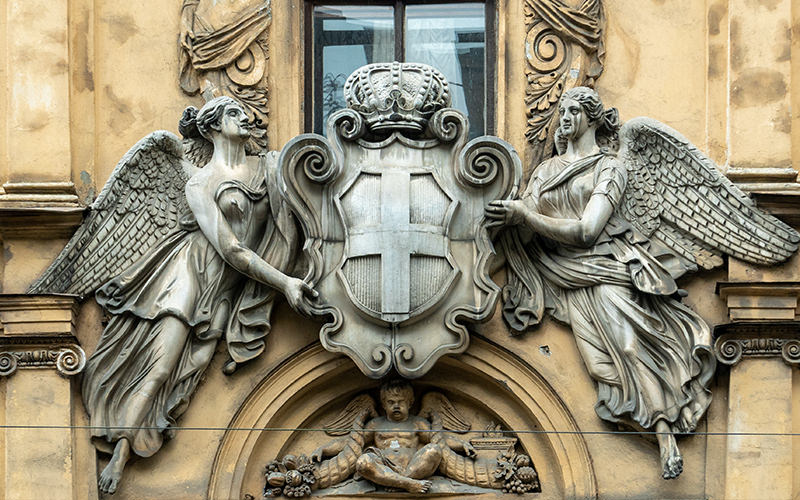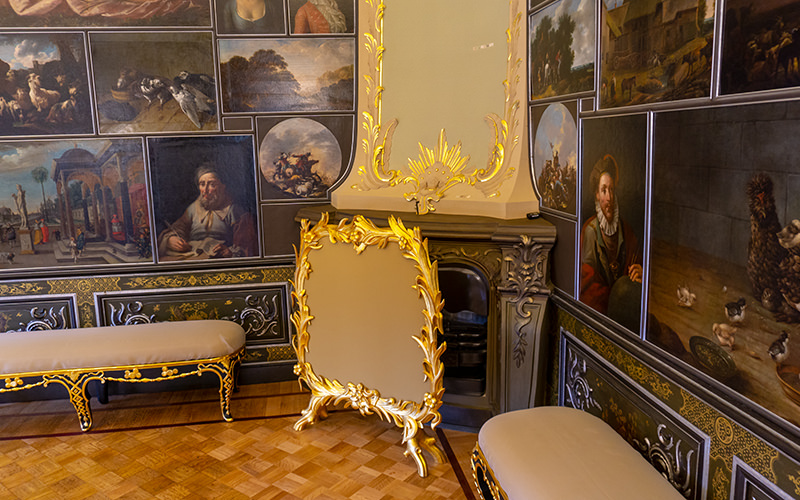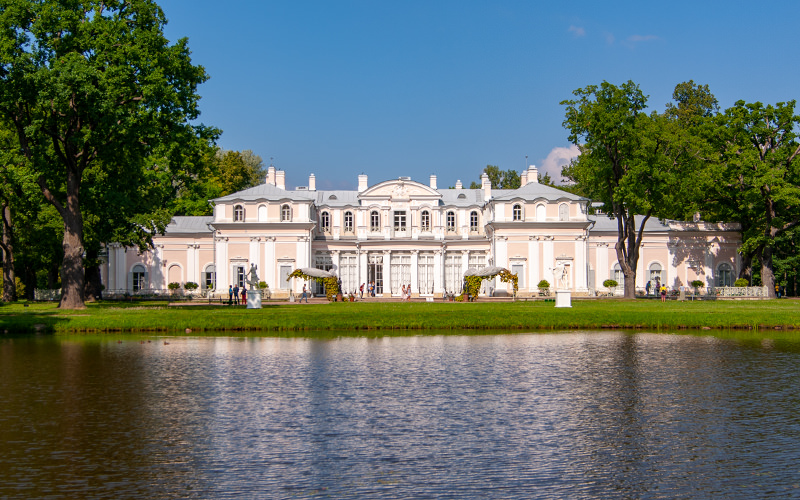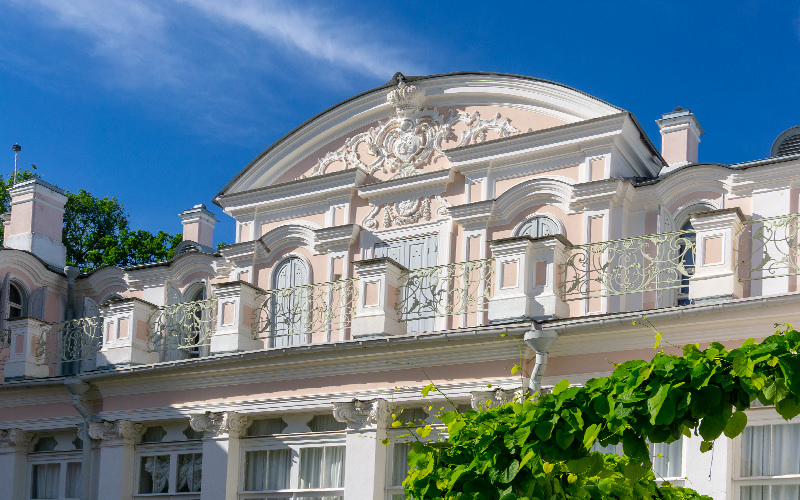The Great Menshikov Palace is the oldest and largest structure in the Oranienbaum palace and park ensemble. It is named in honor of the illustrious Prince A. D. Menshikov. The palace was built in the Petrine Baroque style between 1711 and 1727. Architects such as D. M. Fontana, I. F. Braunstein, and I. G. Shedel were involved in its construction.

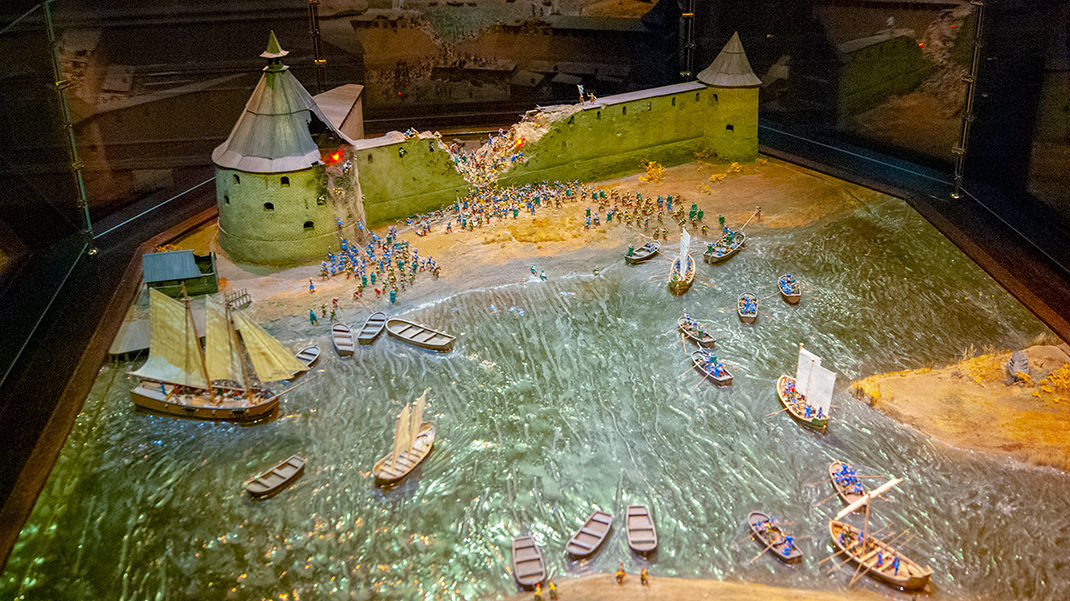
Interestingly, the exact origin of the name "Oranienbaum" is still unclear. Some believe it is a literal translation from German—"orange tree." Others think the name is related to William of Orange, the ruler of the Netherlands, whom Peter I greatly respected.
How to Get There
As before, we traveled to Lomonosov from the "Avtovo" metro station by minibus. The fare is 80 rubles per person. To avoid the evening traffic, we returned by train. From the “Oranienbaum-1” station, you can take either the high-speed “Lastochka” or the regular electric train.
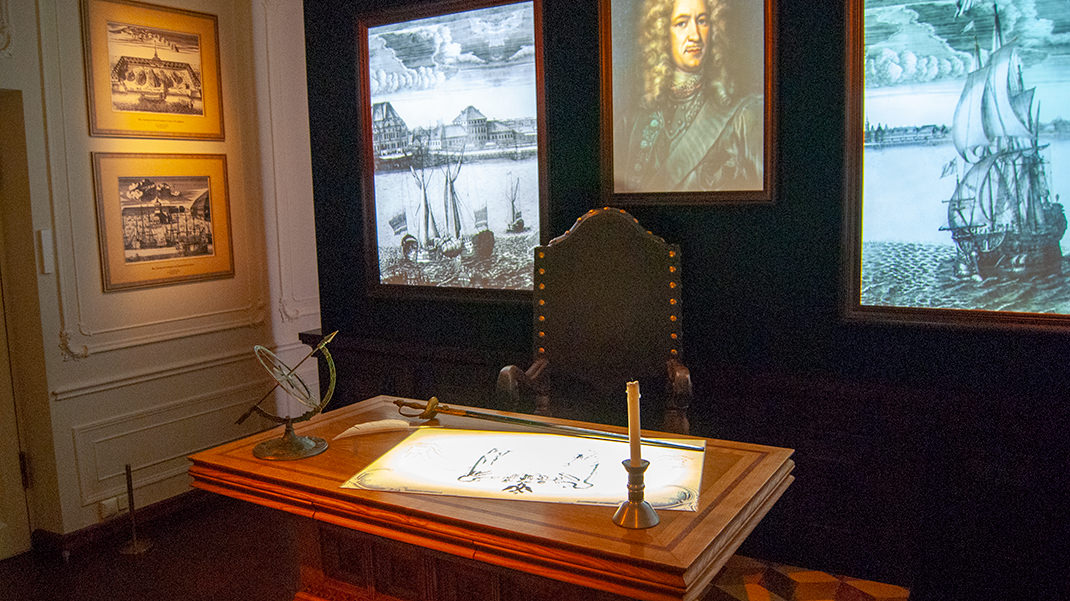
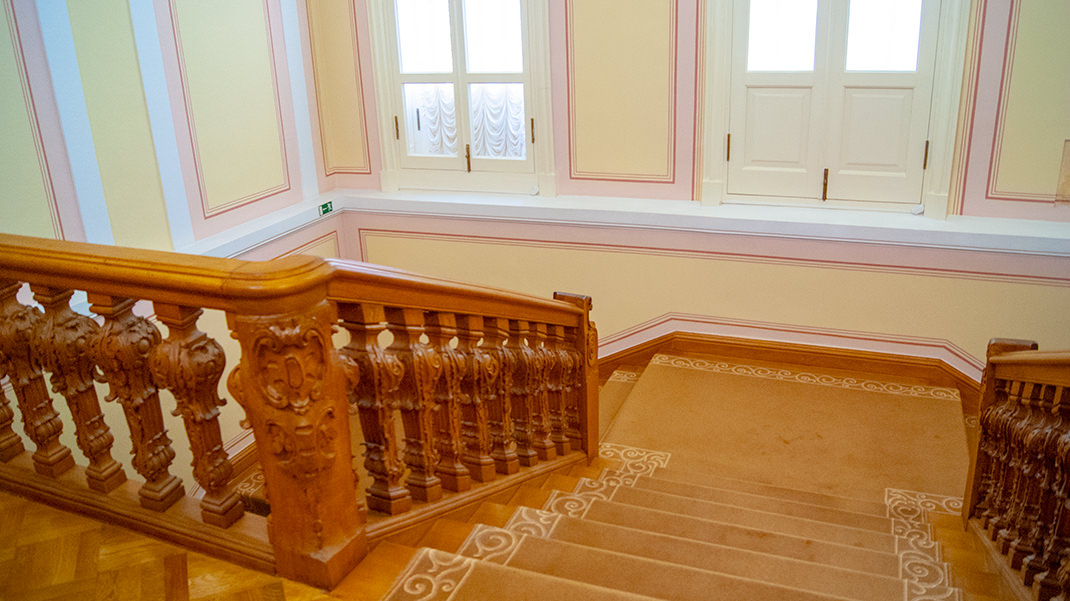
The price of an adult ticket to the palace with a tour is 350 rubles (2019).
A Bit of History
At the time of its construction, the palace interiors were noted for their unprecedented magnificence, even surpassing Peterhof, according to contemporaries. Unfortunately, Menshikov did not enjoy his residence for long; in 1727, he fell from favor, and all his property was confiscated by the state.
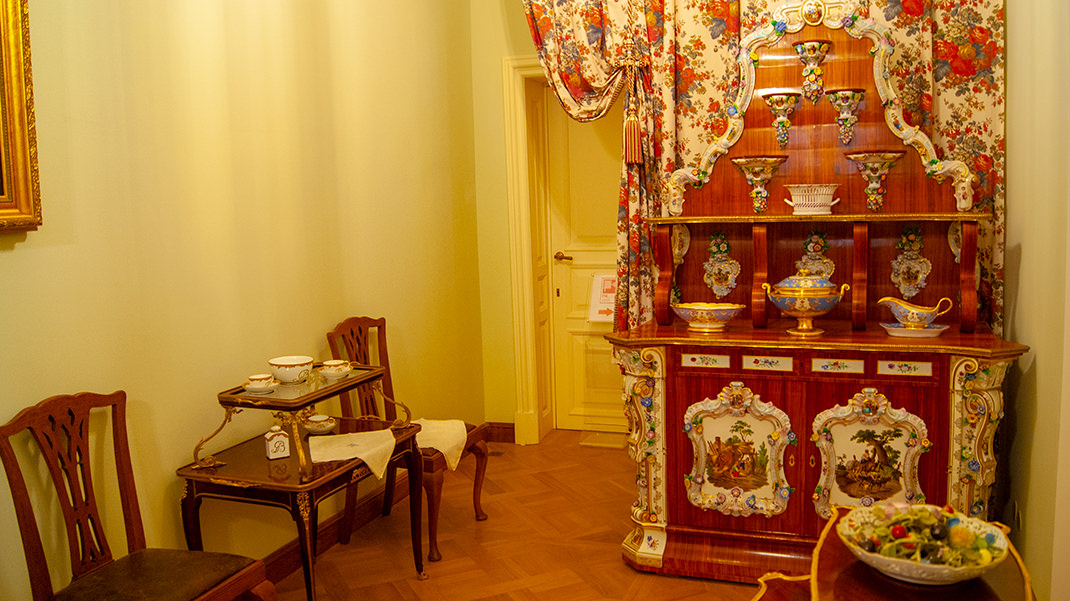
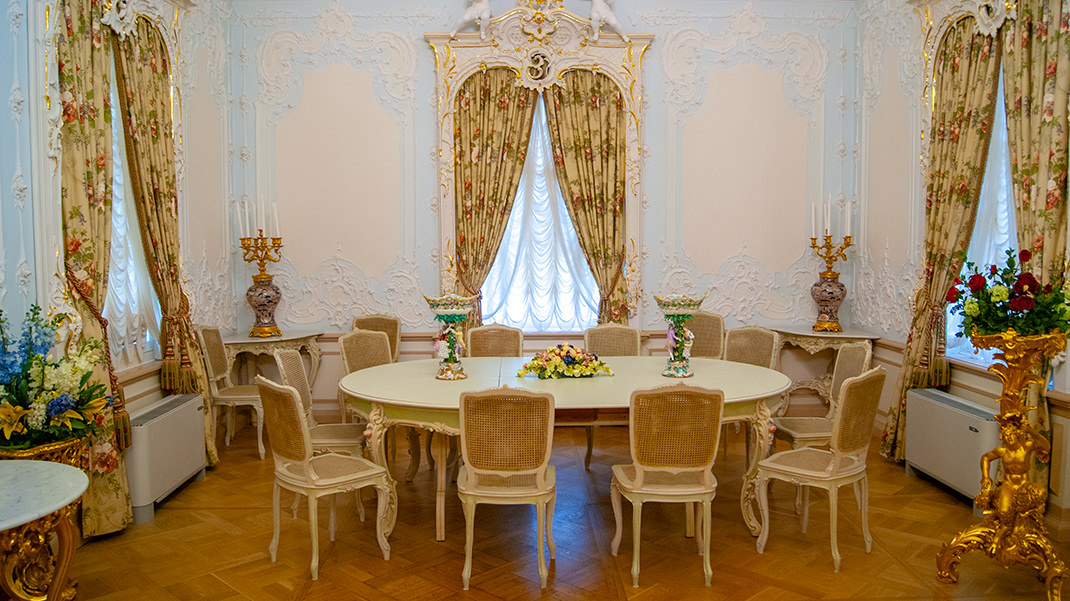
In 1743, Elizabeth Petrovna granted Oranienbaum to Peter Fyodorovich (Peter III) and his wife, Catherine Alexeyevna. According to legends, Peter III’s abdication in favor of Catherine II occurred either in the Japanese Pavilion or the White Hall of the Menshikov Palace. Thus ended his reign, which lasted 186 days.
The 19th century was a period of flourishing for Oranienbaum and the Menshikov Palace in particular, thanks to Grand Duchess Elena Pavlovna. She managed to give the residence originality while preserving its inherent beauty.
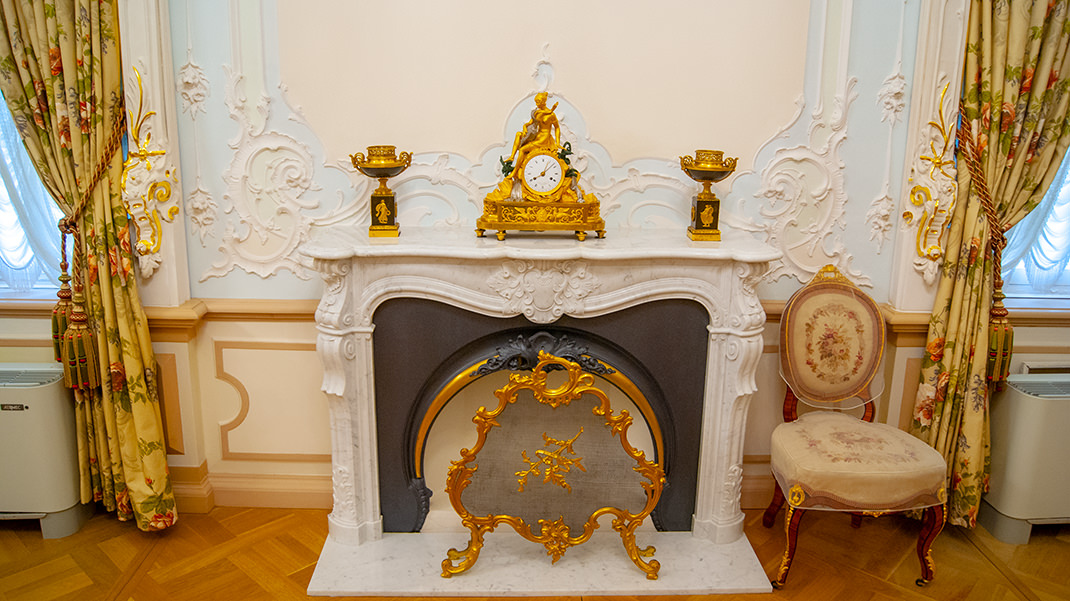

After 1918, the palace was nationalized and used by various organizations, from a hospital to a school. Notably, Oranienbaum is the only palace and park complex in the vicinity of Petersburg that survived the Great Patriotic War. It wasn’t until 1995 that it became a museum, opening to the public in 2011.
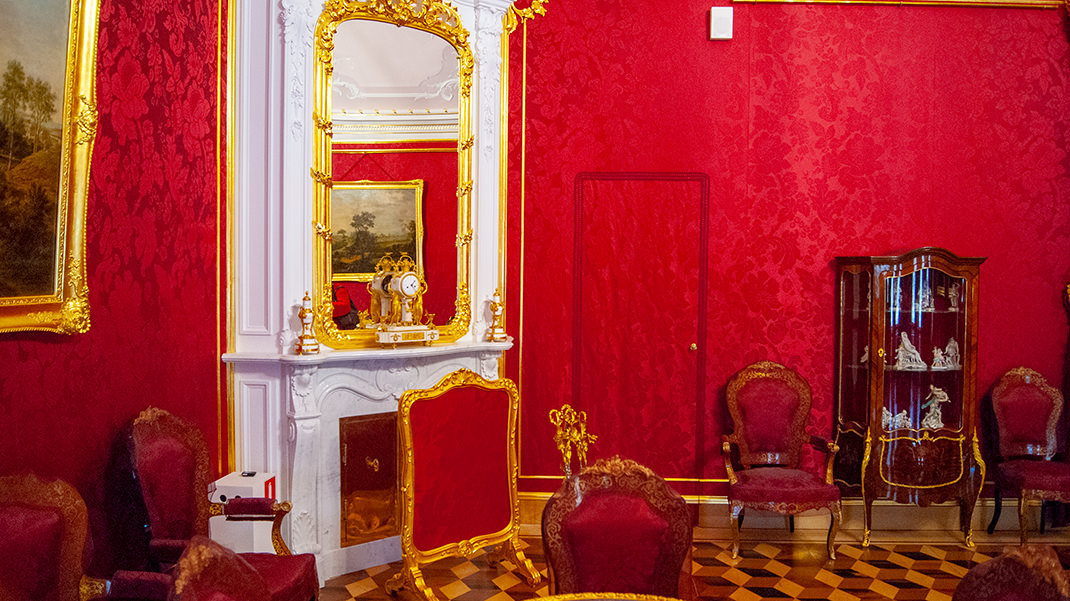

Tour
We visited the Oranienbaum park in the summer, and the palace was postponed until winter. Finally, the time had come. The first thing that strikes you upon entering is the size. It is indeed very large, and your gaze immediately rests on the princely crown topping the main building. We enter and wait for the tour guide.

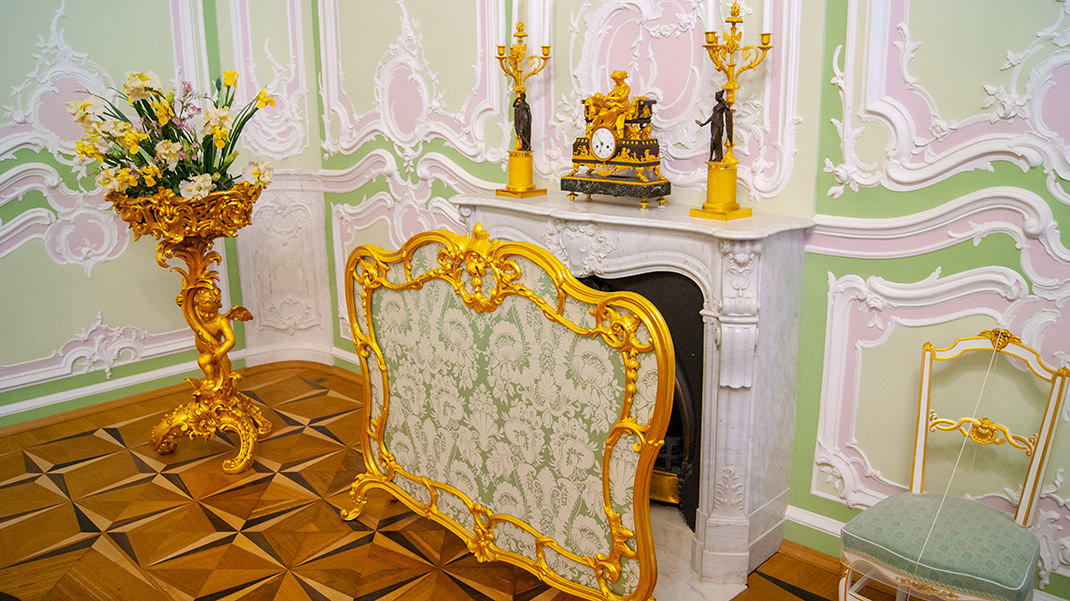
Interestingly, the tour began without a guide. Initially, we were taken through several interactive rooms where, using projectors and moving models, we learned a lot about the palace's history.
Next, we had the classic tour with a real guide. The tour starts with the grand staircase. It is decorated with wooden balusters, each made according to an individual design. The ceiling is also impressive: all the stucco work is done by hand, without using molds.

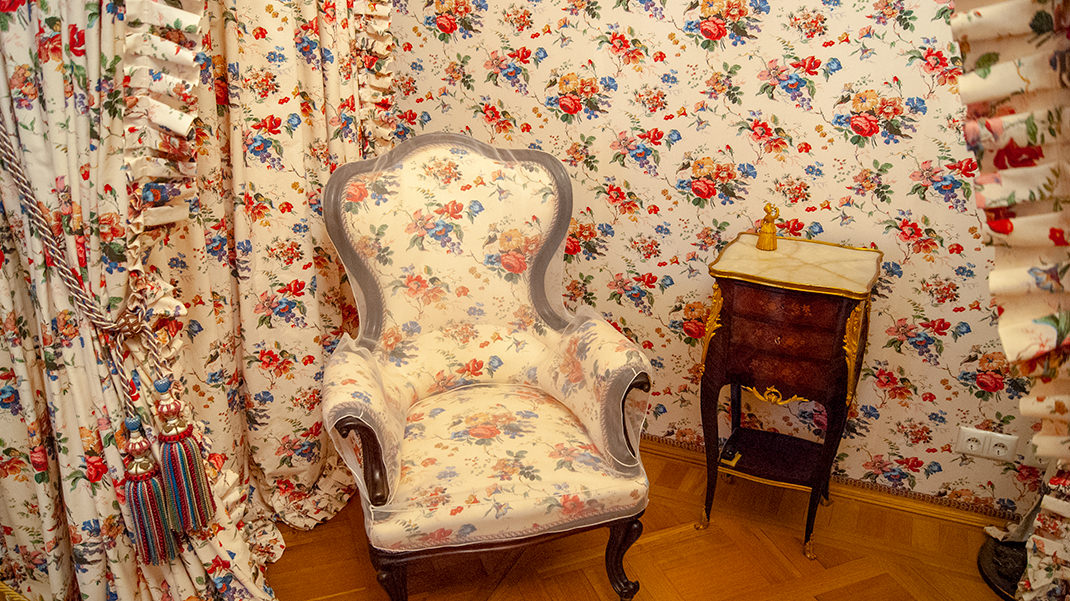
We pass through a small buffet area into the dining room. The eye is drawn to the chandeliers and furniture. The chandeliers are made of porcelain, and the craftsmanship is simply astounding. It could take up to a year to make just one. The furniture surprised us with its wheels; to save on costs, it was veneered with high-quality wood, which made it quite heavy and difficult to move.


We move through several more rooms, where the interiors impress with their abundance of decor and small details. Everything reflects the aristocratic background of the former owners. The large study immediately sets a working atmosphere. In contrast, the bedroom and the lavatory are decorated with floral patterns, indicating they were used by women. The lavatory is notably large, as dresses were so cumbersome that it was impossible to put them on or take them off alone.
We descend to the first floor, where there are several exhibition halls and the office of the palace’s last owners, the Dukes of Mecklenburg-Strelitz.
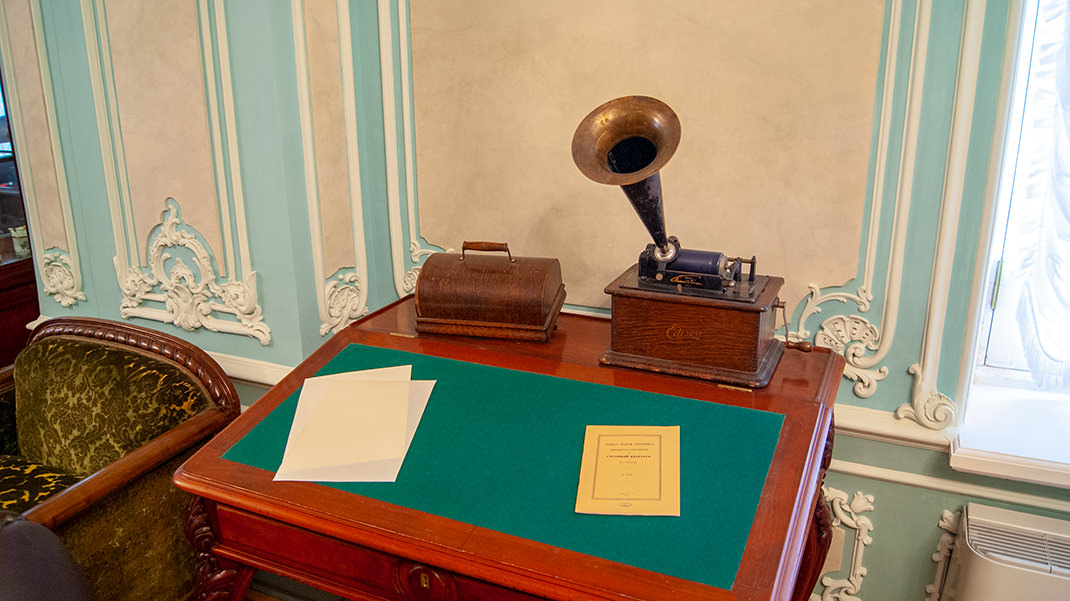
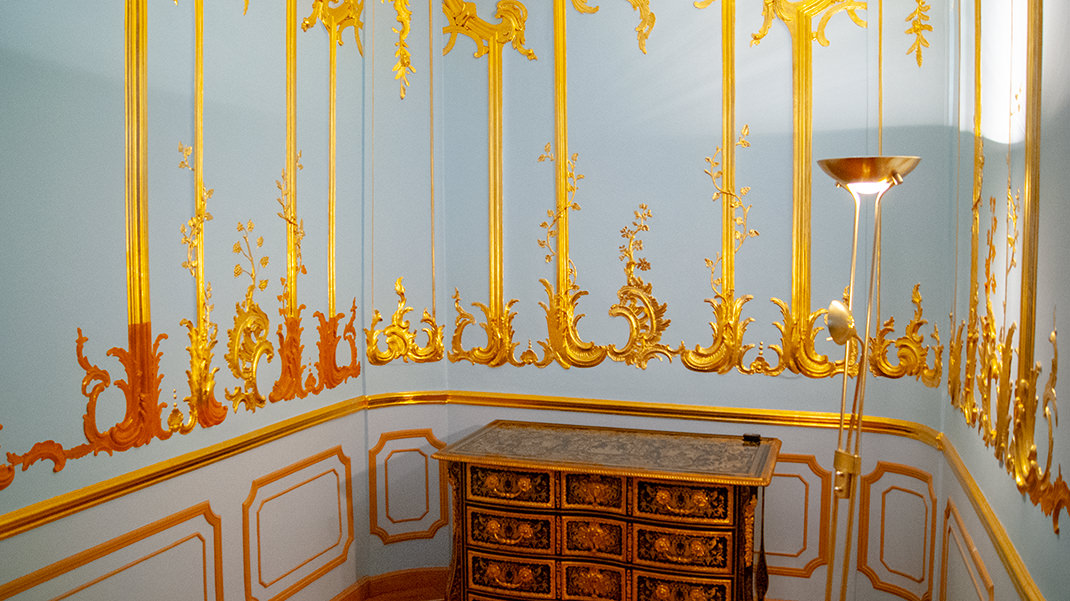
And that concludes our tour. By the way, during the summer, another architectural masterpiece by architect Antonio Rinaldi, the Chinese Palace, will be open in Oranienbaum.
In summary:
- Magnificent interiors;
- Interactive historical overview;
- A touch of palace intrigue.


